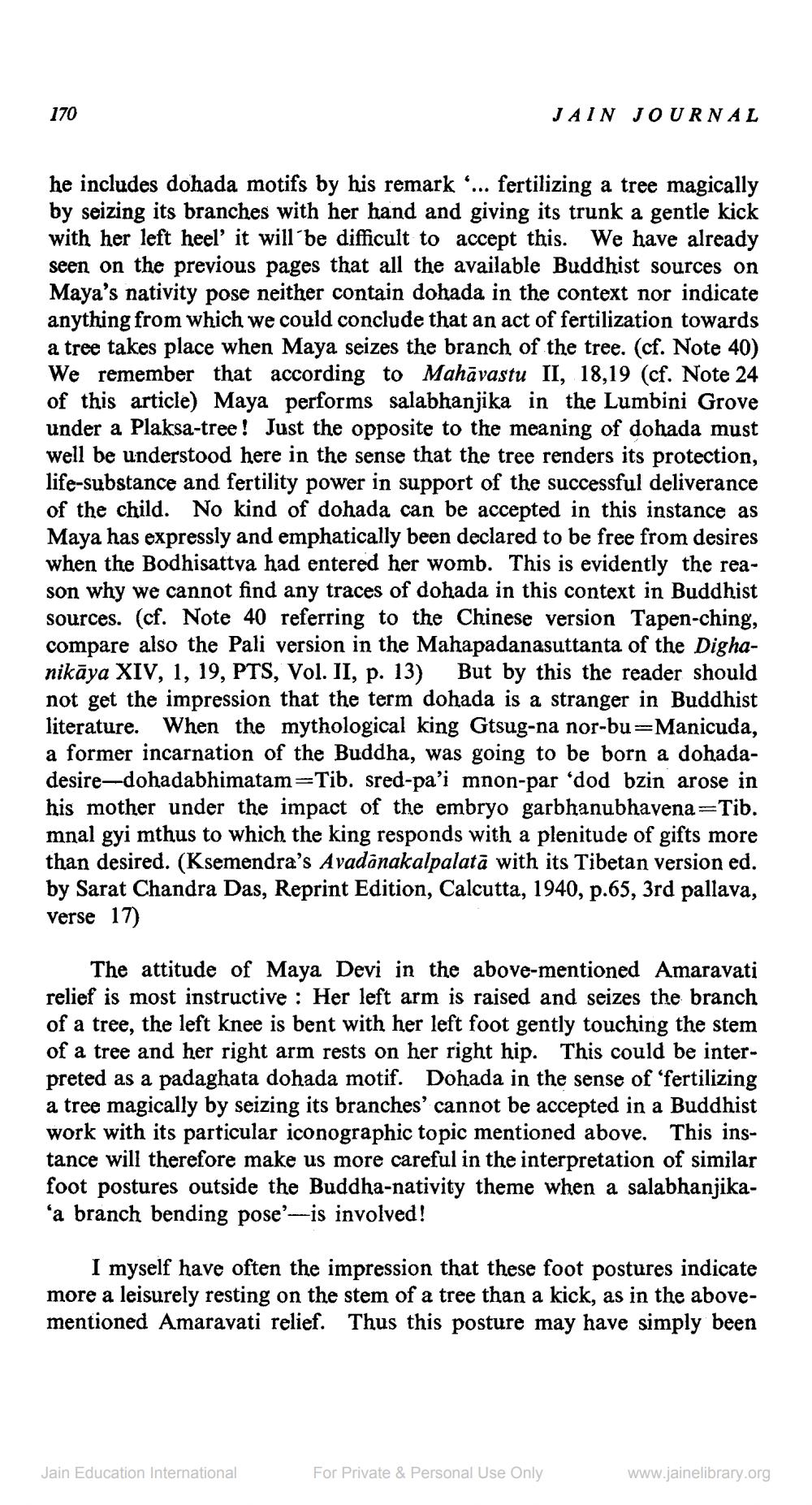________________
170
he includes dohada motifs by his remark '... fertilizing a tree magically by seizing its branches with her hand and giving its trunk a gentle kick with her left heel' it will be difficult to accept this. We have already seen on the previous pages that all the available Buddhist sources on Maya's nativity pose neither contain dohada in the context nor indicate anything from which we could conclude that an act of fertilization towards a tree takes place when Maya seizes the branch of the tree. (cf. Note 40) We remember that according to Mahāvastu II, 18,19 (cf. Note 24 of this article) Maya performs salabhanjika in the Lumbini Grove under a Plaksa-tree! Just the opposite to the meaning of dohada must well be understood here in the sense that the tree renders its protection, life-substance and fertility power in support of the successful deliverance of the child. No kind of dohada can be accepted in this instance as Maya has expressly and emphatically been declared to be free from desires when the Bodhisattva had entered her womb. This is evidently the reason why we cannot find any traces of dohada in this context in Buddhist sources. (cf. Note 40 referring to the Chinese version Tapen-ching, compare also the Pali version in the Mahapadanasuttanta of the Dighanikāya XIV, 1, 19, PTS, Vol. II, p. 13) But by this the reader should not get the impression that the term dohada is a stranger in Buddhist literature. When the mythological king Gtsug-na nor-bu=Manicuda, a former incarnation of the Buddha, was going to be born a dohadadesire-dohadabhimatam=Tib. sred-pa'i mnon-par 'dod bzin arose in his mother under the impact of the embryo garbhanubhavena=Tib. mnal gyi mthus to which the king responds with a plenitude of gifts more than desired. (Ksemendra's Avadānakalpalatā with its Tibetan version ed. by Sarat Chandra Das, Reprint Edition, Calcutta, 1940, p.65, 3rd pallava, verse 17)
JAIN JOURNAL
The attitude of Maya Devi in the above-mentioned Amaravati relief is most instructive: Her left arm is raised and seizes the branch of a tree, the left knee is bent with her left foot gently touching the stem of a tree and her right arm rests on her right hip. This could be interpreted as a padaghata dohada motif. Dohada in the sense of 'fertilizing a tree magically by seizing its branches' cannot be accepted in a Buddhist work with its particular iconographic topic mentioned above. This instance will therefore make us more careful in the interpretation of similar foot postures outside the Buddha-nativity theme when a salabhanjika'a branch bending pose'-is involved!
I myself have often the impression that these foot postures indicate more a leisurely resting on the stem of a tree than a kick, as in the abovementioned Amaravati relief. Thus this posture may have simply been
Jain Education International
For Private & Personal Use Only
www.jainelibrary.org




